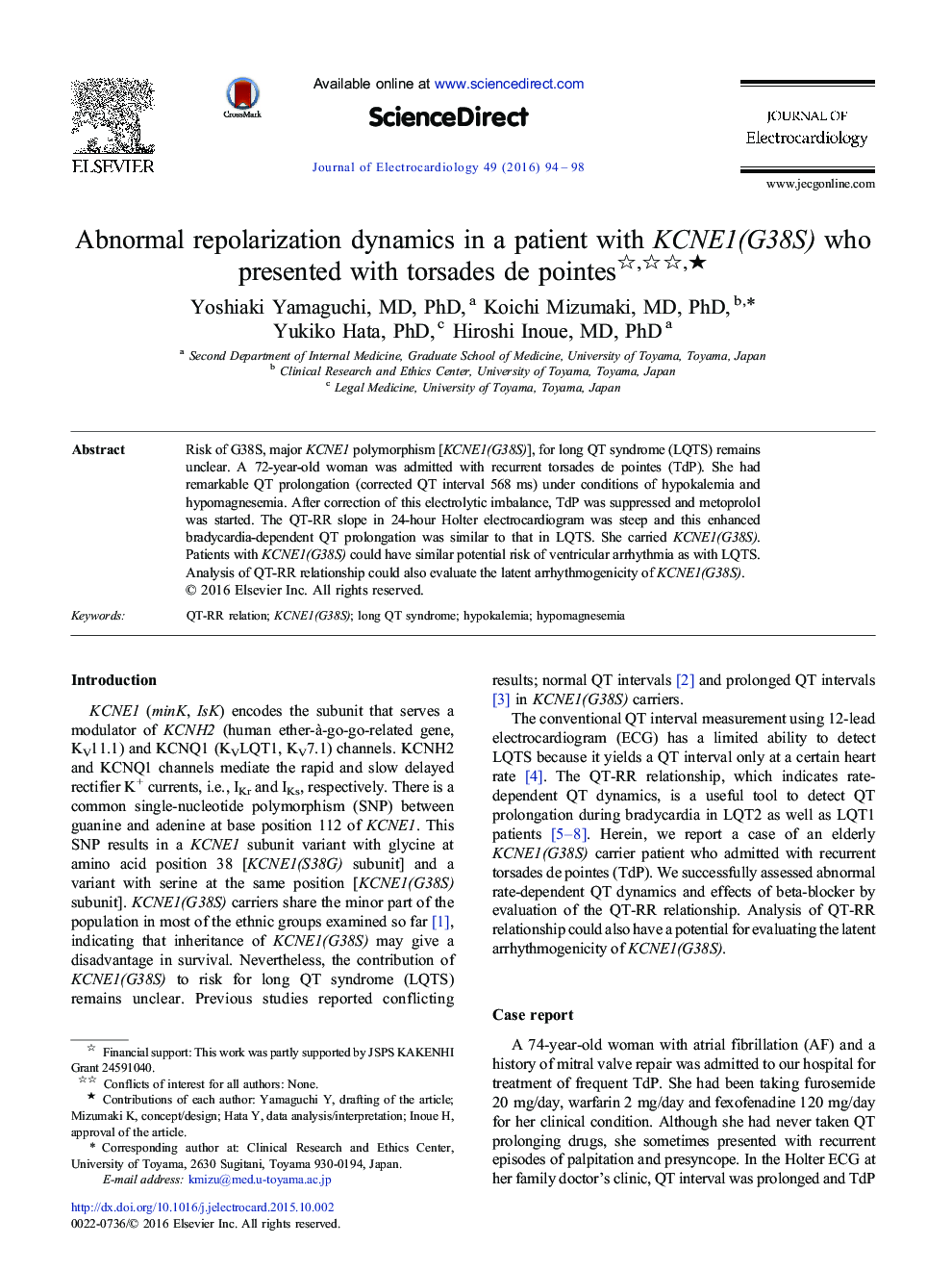| Article ID | Journal | Published Year | Pages | File Type |
|---|---|---|---|---|
| 2967344 | Journal of Electrocardiology | 2016 | 5 Pages |
•We experienced a 72-year-old woman carrying G38S, major KCNE1 polymorphism [KCNE1(G38S)] with remarkable QT prolongation (corrected QT interval 568 ms) and recurrent torsades de pointes under conditions of hypokalemia and hypomagnesemia.•The QT-RR slope in her 24-hour Holter electrocardiogram was steep and this enhanced bradycardia-dependent QT prolongation was similar to that in LQTS.•Patients with KCNE1(G38S) could have similar potential risk of ventricular arrhythmia as with long QT syndrome and analysis of QT-RR relationship could also evaluate the latent arrhythmogenicity of KCNE1(G38S).
Risk of G38S, major KCNE1 polymorphism [KCNE1(G38S)], for long QT syndrome (LQTS) remains unclear. A 72-year-old woman was admitted with recurrent torsades de pointes (TdP). She had remarkable QT prolongation (corrected QT interval 568 ms) under conditions of hypokalemia and hypomagnesemia. After correction of this electrolytic imbalance, TdP was suppressed and metoprolol was started. The QT-RR slope in 24-hour Holter electrocardiogram was steep and this enhanced bradycardia-dependent QT prolongation was similar to that in LQTS. She carried KCNE1(G38S). Patients with KCNE1(G38S) could have similar potential risk of ventricular arrhythmia as with LQTS. Analysis of QT-RR relationship could also evaluate the latent arrhythmogenicity of KCNE1(G38S).
